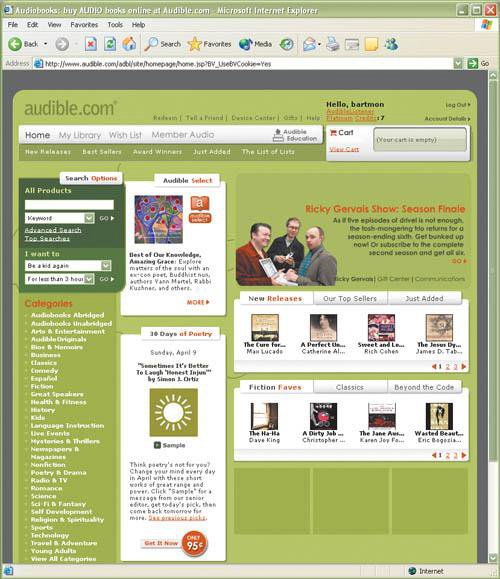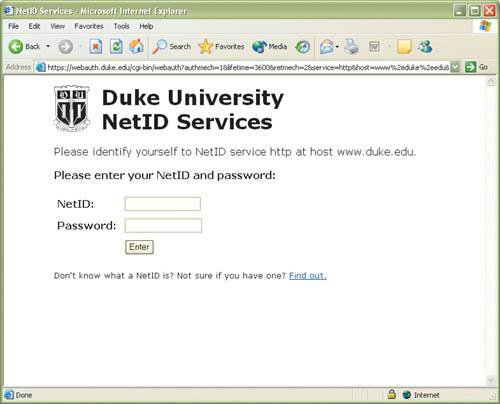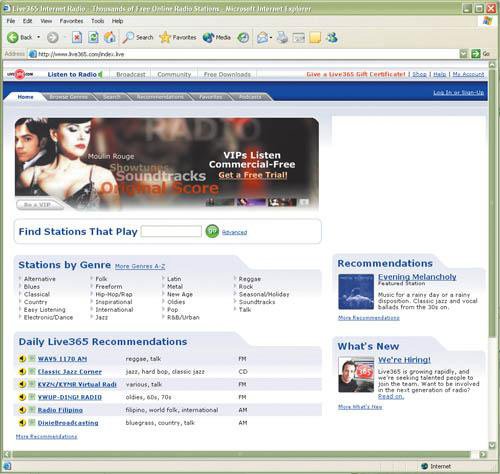Alternative Podcasting Distribution Options
| RSS is the de facto dominant way to distribute podcasts over the Internet, and for most home-baked podcast creators, this is the way they go about distribution. Some commercial enterprises, however, use a couple of other methods to distribute podcasts, and those methods are what this section examines. MP3 (Or Similar) FilesUltimately, when a podcast is created, it becomes an MP3, MP4, Ogg Vorbis, WAV, or AAC file. In the case of mainstream podcasting, these files are then published via RSS. Some podcasts, however, are not set up with RSS but are instead available as straight downloads in the form of MP3 files (or one of the other compression formats). Although RSS offers the most exposure for a podcast, having a simple downloadable file also has its advantages and uses. The most common examples of downloadable MP3 files in the commercial realm are audiobooks and periodicals through sites like Audible.com (Figure 5.10). These sites sell content and then make the content available as downloadable compressed files that can be played on many MP3 players. In the case of Audible.com, the files are also available as streaming content, but a large number of the site's customers use the download feature so that they have a copy of the podcast on their hard drives. Figure 5.10. Audible.com allows downloading of all the podcasts it sells. Corporations are increasingly making podcasts available to both the curious public and their employees. In the case of Duke University (Figure 5.11), educational lectures are made available as MP3 files for download by the student body. Basically, any audio file that is available as a download from a hyperlink on any Web site is considered to be a podcast. Figure 5.11. From this portal, Duke University is using audio files to disseminate lectures to its students. If you are creating a podcast for a company that wants only a select group of people to hear it, placing the podcast in a hyperlink for individual download may be the best route to take. Many companies and organizations include a combination of a hyperlink to the podcast file and an RSS feed and/or a streaming feed. Indeed, some podcasters have begun to make their podcasts available through multiple routes. On the site of the top-ten podcast "MuggleCast," for example, links are included for download of the podcasts, streaming podcasts, and RSS feeds (Figure 5.12). Figure 5.12. "MuggleCast" is an example of a podcast that offers multiple access points. Ultimately, the most compelling reasons to link a podcast file to a hyperlink on a Web site are
StreamingUntil the phenomenon of podcasting reared its head, much of the audio content on the Internet came in the form of streaming audio. Streaming audio is an audio feed that is downloaded dynamically (as you listen to it) from a source somewhere on the Internet to a media player on your computer. Internet radio uses this technology, as do many movie preview sites that show movie trailers. Streaming is also used by commercial Web sites like Amazon.com (where users can hear samples of songs being sold) and Audible.com (where users can listen to entire books). Ultimately, streaming audio is not the most important pathway for getting your podcasts heard; RSS feeds are by far the best method. That said, if you want to use it, you can provide streaming audio in several ways, including:
Figure 5.13. Sites like Live365 can stream your material if you are gung-ho on having streaming audio of your podcasts.
|
EAN: 2147483647
Pages: 89
